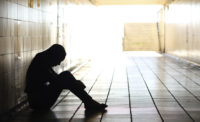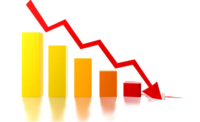 Income level, occupational type and gender all play a part in whether or not a U.S. worker gets paid sick leave, according to a new study by the Institute for Women’s Policy Research.
Income level, occupational type and gender all play a part in whether or not a U.S. worker gets paid sick leave, according to a new study by the Institute for Women’s Policy Research.
“Paid sick days bring substantial benefits to employers, workers, families, and communities,” according to by Claudia Williams, Barbara Gault, Ph.D., authors of: Paid Sick Days Access in the United States: Differences by Race/Ethnicity, Occupation, Earnings, and Work Schedule.
Among the economic and public health benefits: safer work environments; improved work life balance, reduced spread of contagion; and reduced health care costs.
Unequal distribution
Williams and Gault note that access to paid sick leave in the U.S. is “still too rare,” and is unequally distributed across the U.S. population.
Utilizing data from the National Health Interview Survey (NHIS), IWPR found that in 2012, approximately 61 percent of private-sector workers age 18 and older in the U.S. had access to paid sick days, up from 57 percent in 2009. More than 41 million workers lack access.
Income difference
Workers with annual incomes at or below $19,999 are less likely than workers with higher earnings to have paid sick days. Fewer than three out of ten workers (28 percent) in this earnings group are able to take a day off with pay when they are sick, whereas eight in ten workers earning $65,000 or more have access to paid sick days.
Architecture v. forestry
Access to paid sick days varies widely depending on the type of occupations employees hold. Across the broad spectrum of occupations in the United States, access to paid sick days varies from 87 percent for employees in architecture and engineering to only 20 percent for those employed in farming, fishing and forestry – among the most dangerous occupations in the U.S., according to OSHA.
Paid sick days are especially uncommon in certain jobs requiring frequent contact with the public, which has important public health implications. Less than a quarter (24 percent) of employees in Food Preparation and Serving Related occupations, and fewer than a third (31 percent) of workers in Personal Care and Service occupations have access to sick days with pay.
Full-time v. part-time
Full-time workers are much more likely to get paid sick days than part-time workers (70 percent compared with 26 percent).
Hispanic workers are much less likely to have paid sick days than white, Asian or black workers. Less than half of Hispanic workers (47 percent) in the United States have access to paid sick days.
Access rates for male and female workers are 60 and 62 percent, respectively. Among Hispanic and black workers, women are more likely than men to have access to paid sick days, which may relate to occupational distribution by gender, Sixty-four percent of black women are estimated to have access to paid sick days compared with 60 percent of men. The same pattern applies among Hispanic men and women, with 51 percent of women, compared with 45 percent of Hispanic men reporting access to sick leave.
“Ensuring greater access to paid sick days for all workers, and especially low-wage, service workers, Hispanic workers, and part-time workers, would bring many public health and economic benefits for employers, families, and communities,” the study’s authors conclude.



